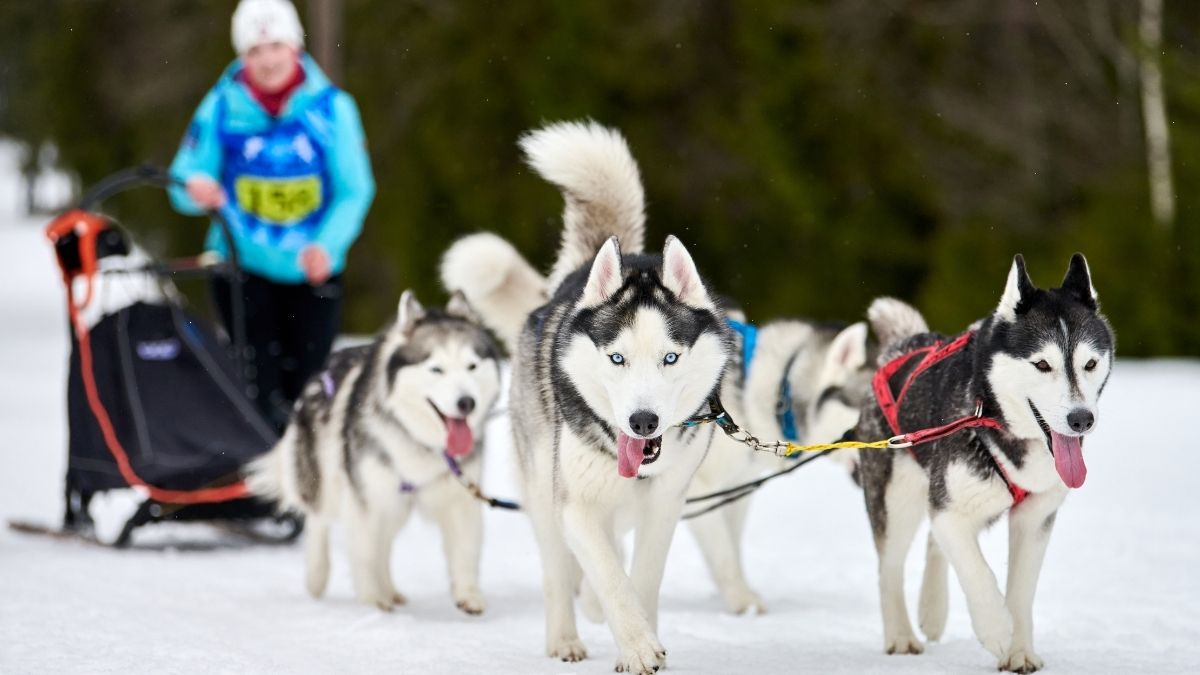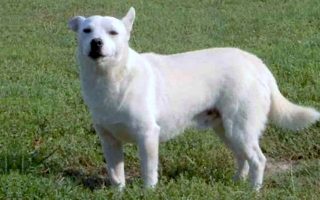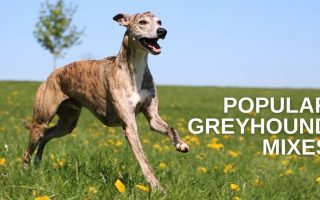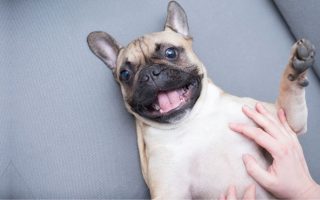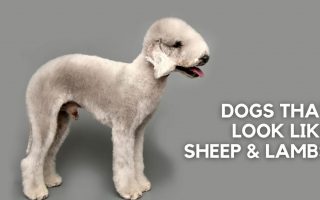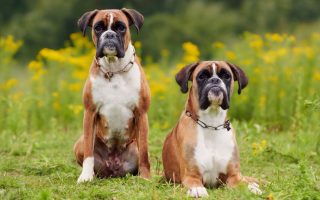If we could describe the best sled dog breeds with one word, it would be “cool!”
Courageous, fast, friendly, and strong, sled dogs were developed to do a lot of work over a long distance in unfavorable weather.
Modern Americans have little use for sleds, but these dogs have proven that snow isn’t the only thing they can adapt to.
They make good companions as much as they were sled dogs.
We’ll be looking into 13 different sled dog breeds so you can have an idea about them if you’re considering having one as a household pet.
Before delving into these breeds, we’ll also understand what a sled dog is.
What is a Sled Dog?
Sled dogs have been around for millennia, going as far back as 35,000 years.
It is widely believed that these dogs developed in Mongolia, and were also a part of Native American cultures.
A sled dog was used as a means of transport, usually in cold areas. These dogs worked in packs to pull a sled that was attached to them with a harness.
They were one of the main methods of transport in the Arctic areas till technology evolved and new forms of transport came about.
Today, many communities don’t need sled dogs as transport, but they still play that role in some rural areas in countries like Russia and Canada.
They also participate in sled racing, an example of which is the Iditarod. The third role they play in modern times is that of companionship.
There are some significant moments in history where humanity relied on sled dogs to accomplish an objective.
A popular example is the diphtheria outbreak of 1925 in Alaska. A team of sled dogs was entrusted with saving a town with the antidote.
This particular period formed the basis for many dog sledding movies, including Balto and Togo.
Some individuals are concerned about sled dogs being used as companions.
This school of thought argues that these dogs can pose challenges in house training, learning how to walk on a leash, and even separation anxiety.
However, many pet parents have successfully integrated these dogs into their homes. It takes experience to do so, but it can be done.
This is why we compiled a list of the 13 best sled dogs that do more than pulling sleds.
Best Sled Dog Breeds That Make Good Companions
1. Siberian Husky
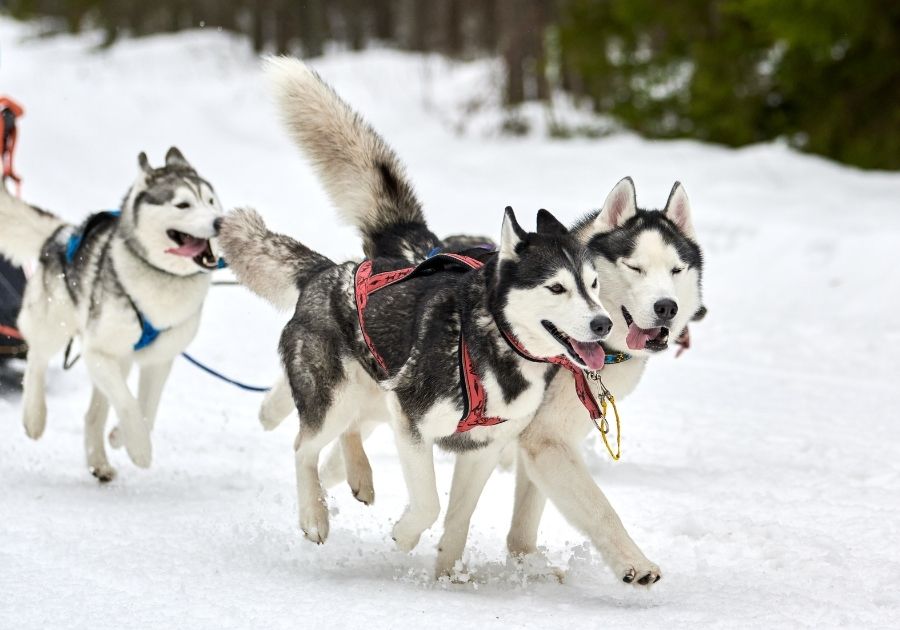
Breed Facts
- AKC Group: Working Group
- Height: 20 to 23 inches
- Weight: 35 to 60 pounds
- Coat Type: Double, straight, dense
- Coat Color: Black, white, black, and tan
- Temperament: Outgoing, friendly, gentle
- Origin: Siberia
- Life expectancy: 12 to 15 years
- Grooming: High
- Energy: High
- Health: High
- Good for Apartment: No
The Siberian Husky is the most popular sled dog turned companion.
Movies have drawn the attention of the public towards this breed, and the demand for the Siberian Husky is high.
It is a native of Siberia where it started as a sledding dog for the Chukchi tribe.
Eventually, this breed got into the United States during the period of the gold rush in Alaska. The American Kennel Club recognized it in 1930.
The Siberian Husky is friendly towards everyone, both those it considers pack members and outsiders.
You can’t trust this breed to be a guard dog as the only thing that would scare people away is its looks.
It is hard to train, though, and needs a lot of exercise.
2. Chinook
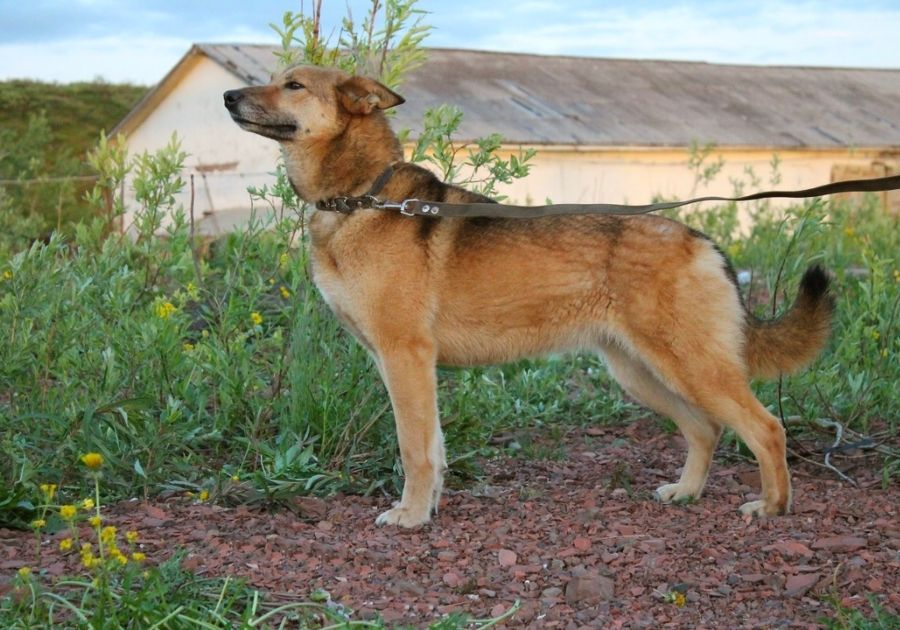
Breed Facts
- AKC Group: Working Group
- Height: 21 to 27 inches
- Weight: 55 to 70 pounds
- Coat Type: Medium, dense, coarse
- Coat Color: White, fawn, tawny
- Temperament: Calm, friendly, eager to please
- Origin: United States
- Life Expectancy: 12 to 15 years
- Grooming: High
- Energy: Medium
- Health: High
- Good for Apartment: Yes
The Chinook is not as popular as the Siberian Husky, but it is central in any list of best sled dogs.
It was developed in New Hampshire by a man named Arthur Walden who bred a farm dog with a Husky. From the resulting litter, he named one Chinook.
In 1928, Chinook and other dogs of the litter accompanied Admiral Byrd to Antarctica. Unfortunately, Chinook went missing during that mission.
The remaining litter came under the care of other owners like Perry and Honey Greene.
Chinook soon became a breed, and almost went extinct in 1981. It remains rare today, and only got recognized by the American Kennel Club in 2013.
The Chinook is an ideal companion for an active owner, particularly someone who enjoys jogging or hiking.
The athleticism and stamina that got Byrd interested in this breed haven’t left today.
Like the Siberian Husky, it is neither a guard dog nor a watchdog. It is calmer than the Siberian Husky, however, and can adapt to an apartment.
3. Alaskan Malamute
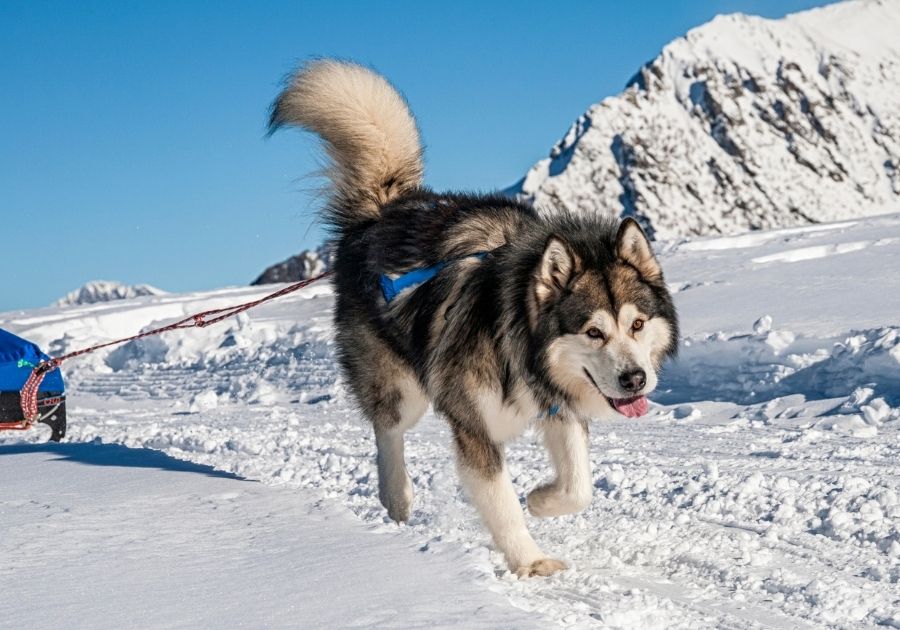
Breed Facts
- AKC Group: Working Group
- Height: 23 to 25 inches
- Weight: 75 to 100 pounds
- Coat Type: Double, dense, thick
- Coat Color: Black, gray, sable
- Temperament: Playful, devoted, friendly
- Origin: Alaska
- Life Expectancy: 12 to 15 years
- Grooming: High
- Energy: High
- Health: High
- Good for Apartment: No
The Alaskan Malamute is considered one of the oldest artic sled dogs and might also have some wolf genes in them. This doesn’t make it a wolf hybrid, though.
This breed originated in Alaska amongst the Mahlemut tribe and played some other roles besides pulling sleds.
It got recognized by the American Kennel Club in 1935.
The Alaskan Malamute doesn’t have the speed of smaller sled dogs, but it makes that up with strength and stamina.
That’s why it was the preferred dog breed for carrying heavy loads.
These dogs look big and imposing, but they are not good for security because of their friendliness to everyone.
In the hands of an experienced owner, the Alaskan Malamute becomes a lovely companion.
4. Alaskan Husky
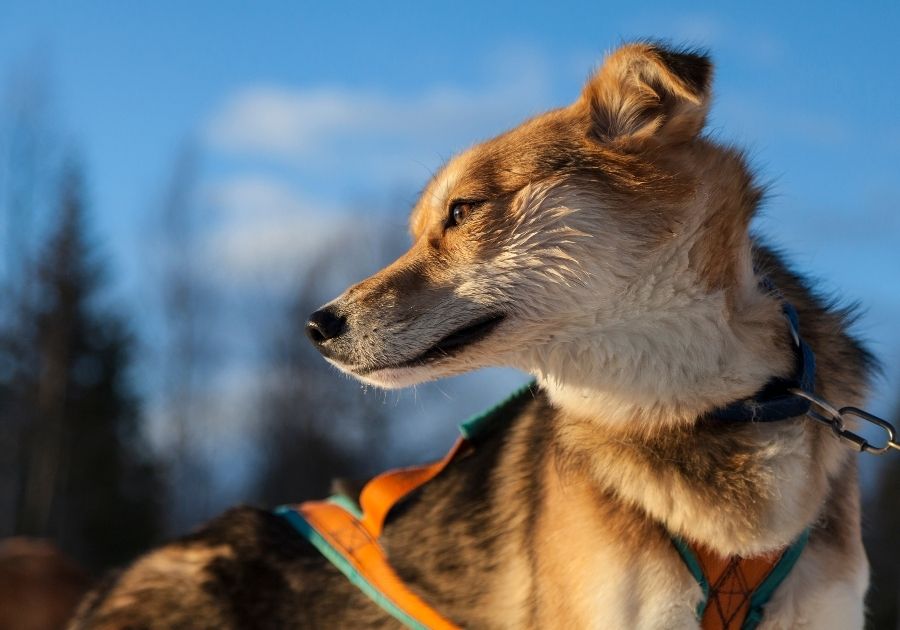
Breed Facts
- AKC Group: Not recognized
- Height: 20 to 26 inches
- Weight: 35 to 75 pounds
- Coat Type: Double, medium, dense
- Coat Color: Any color
- Temperament: Loyal, independent, wilful
- Origin: Alaska
- Life Expectancy: 12 to 16 years
- Grooming: High
- Energy: High
- Health: High
- Good for Apartment: No
The Alaskan Husky is not a recognized breed by any Kennel Club because, technically speaking, it isn’t a breed.
It regroups many small spitz-type dogs that were bred for their working abilities, not their looks.
These dogs play different sledding roles, from pulling heavy loads to sprinting and even going long distances.
Alaskan Huskies aren’t always picked as companion dogs, even today. But those who own one can attest to its affection and love.
Though a serious working dog, the Alaskan Husky is also up for cuddles. It is easy to train but needs a lot of exercise.
The Alaskan Husky is fit for active owners like hikers and joggers.
5. Canadian Eskimo Dog
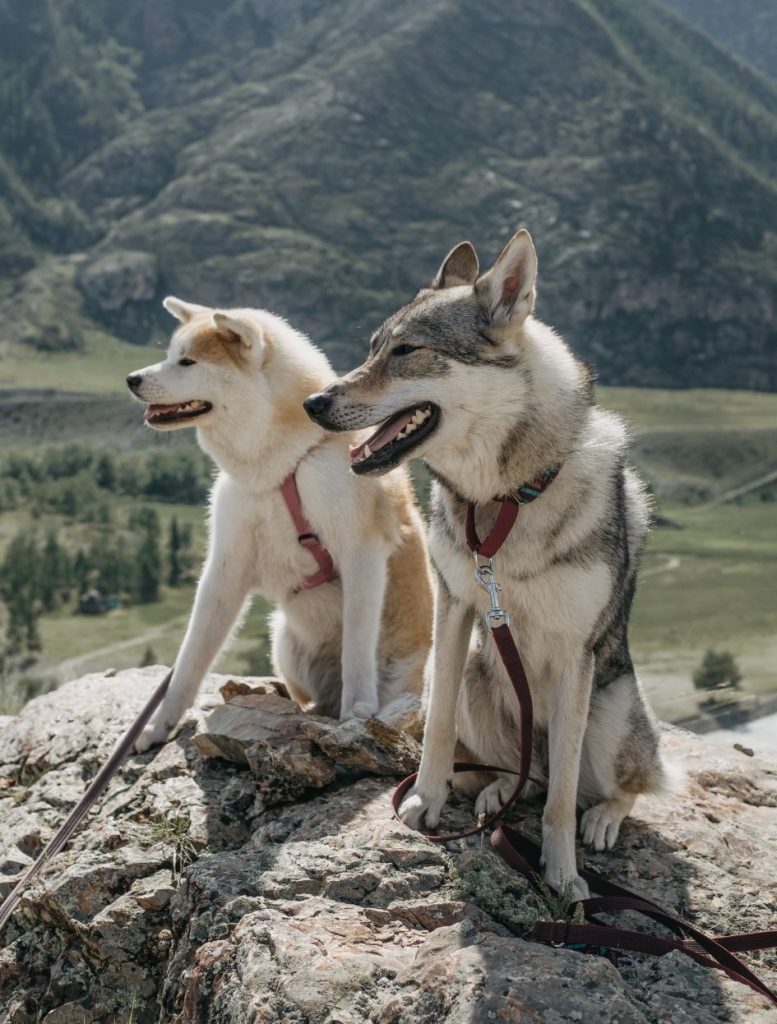
Breed Facts
- AKC Group: Not recognized
- Height: 24 to 29 inches
- Weight: 40 to 80 pounds
- Coat Type: Double, harsh, dense
- Coat Color: White, gray, gray, and white
- Temperament: Courageous, affectionate, intelligent
- Origin: Canada
- Life Expectancy: 12 to 15 years
- Grooming: High
- Energy: High
- Health: High
- Good for Apartment: No
The Canadian Eskimo Dog is a rare sled dog breed that originated in Canada amongst the Inuit tribe. It pulled sled and also hunted seals as well as other animals.
There was a period when the Canadian Eskimo Dog thrived, but that ended with the introduction of snowmobiles.
The Siberian Husky also stole the shine off the Canadian Eskimo Dog, and the latter soon faced extinction.
Fortunately, that didn’t happen, but the breed remains uncommon and hard to find today.
Is it worth looking for one? For those who enjoy the rarity, the answer is a strong yes.
Canadian Eskimo Dogs are intelligent, affectionate, and loyal to their pack.
It might challenge your leadership at times—which is something to expect from all sled dogs—so you need the experience to train one.
This breed is also active and should be exercised regularly.
6. Samoyed
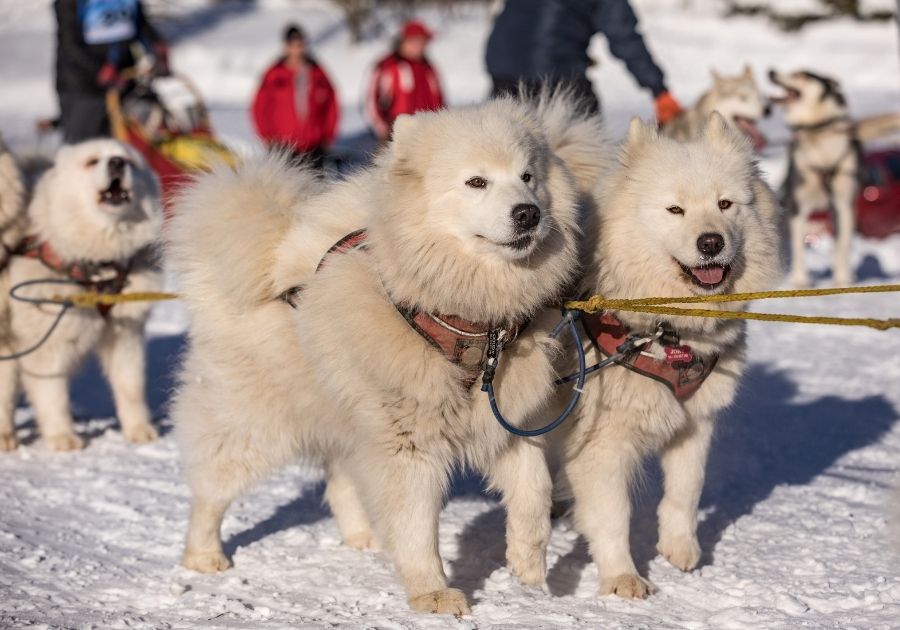
Breed Facts
- AKC Group: Working Group
- Height: 19 to 24 inches
- Weight: 50 to 60 pounds
- Coat Type: Double, straight, soft
- Coat Color: White, white and biscuit, cream
- Temperament: Intelligent, gentle, loyal
- Origin: Siberia
- Life Expectancy: 12 to 14 years
- Grooming: High
- Energy: High
- Health: High
- Good for Apartment: No
The Samoyed is a well-known sled dog that attracts potential dog owners with its white coat and foxlike expression.
It originated in Siberia and was an integral part of the Samoyede tribe from whom it got its name.
This breed pulled sleds, hunted reindeer, and also protected the tribe against predators. It got recognized by the American Kennel Club in 1906.
The Samoyed is friendly with everyone, but it reserves much of its attention for its family.
It often has a favorite, but that doesn’t stop it from relating with everyone else. This breed doesn’t do well alone.
Like every other breed we’ve mentioned thus far, the Samoyed is not for new owners.
Many pet parents who were blinded by the beauty of the Samoyed find themselves frustrated when they realize how challenging it is to own one. It needs an experienced owner.
7. Northern Inuit Dog
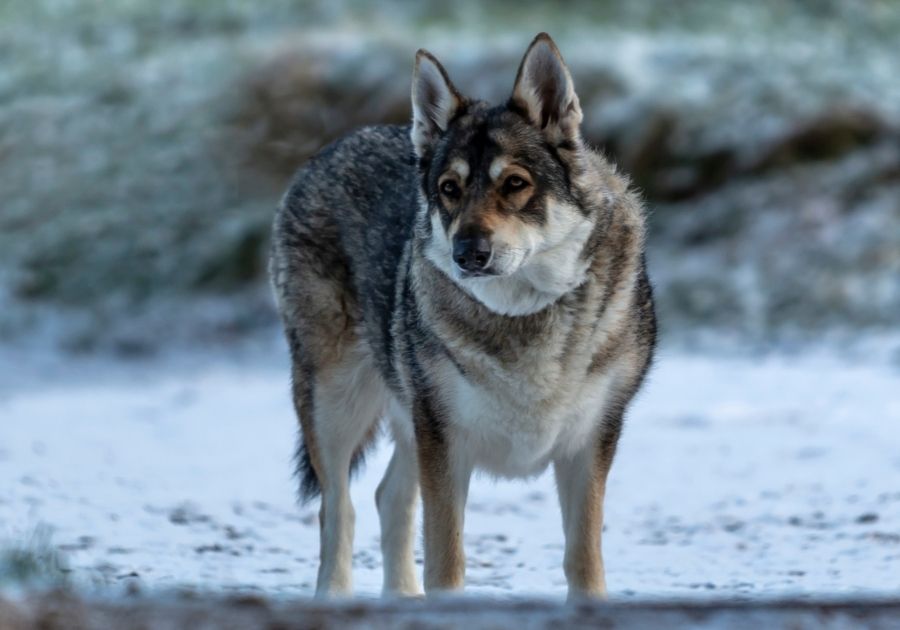
Breed Facts
- AKC Group: Not recognized
- Height: 25 to 32 inches
- Weight: 55 to 110 pounds
- Coat Type: Dense, coarse
- Coat Color: White, black, grey, sable
- Temperament: Friendly, loyal, intelligent
- Origin: United Kingdom
- Life Expectancy: 12 to 15 years
- Grooming: High
- Energy: High
- Health: High
- Good for Apartment: No
The Northern Inuit Dog is not a pure breed, which explains why it is not recognized by the American Kennel Club.
It is a hybrid that many believe was gotten from a cross between the German Shepherd and the Siberian Husky.
Some experts also argue that the Samoyed, Malamute, and Canadian Eskimo Dog are all ancestors of this hybrid.
Whatever the case, modern breeders of the Northern Inuit Dog only use Northern Inuit parents in a bid to achieve purebred status.
While that hasn’t yet happened, this hybrid has gotten popular. Remember the dire wolves in Game of Thrones? Those are Inuit dogs.
Recommended:
200+ Game Of Thrones Dog Names For Fandoms
This hybrid has a close resemblance to wolves but isn’t a wolf hybrid. Its temperament also differs from the wary and ferocious wolf.
The Northern Inuit dog is a good family pet and loves to be with its loved ones. It can even suffer from separation anxiety when you’re not there.
Training is not for the inexperienced, so you should know what you’re doing before getting this “dire wolf.”
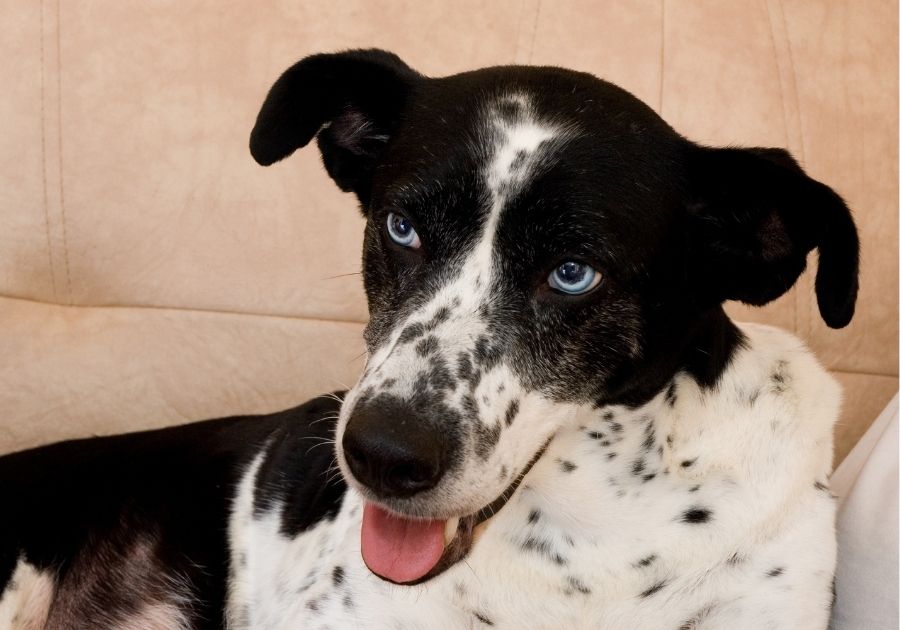
Breed Facts
- AKC Group: Not recognized
- Height: 26 to 28 inches
- Weight: 43 to 53 pounds
- Coat Type: Short, shiny
- Coat Color: Black, white, cream
- Temperament: Loyal, energetic, extroverted
- Origin: Norway
- Life Expectancy: 10 to 15 years
- Grooming: Low
- Energy: High
- Health: High
- Good for Apartment: No
The Scandinavian Hound also goes by the name Eurohound, and it is the most unlikely sled dog so far.
It is also one of the smallest sled dogs you’d find, and as the Northern Inuit Dog, it is not a pure breed.
The Scandinavian Hound was a cross between the Alaskan Husky and pointer dogs (like the German Shorthaired Pointer).
Getting the best from both worlds, the Scandinavian Hound is lightweight, fast, and moves easily through the snow.
As a family companion, this mix shows loyalty to its family and is accommodating of every human it meets.
Because of its high energy level, the Scandinavian Hound is not for everyone.
9. Sakhalin Husky
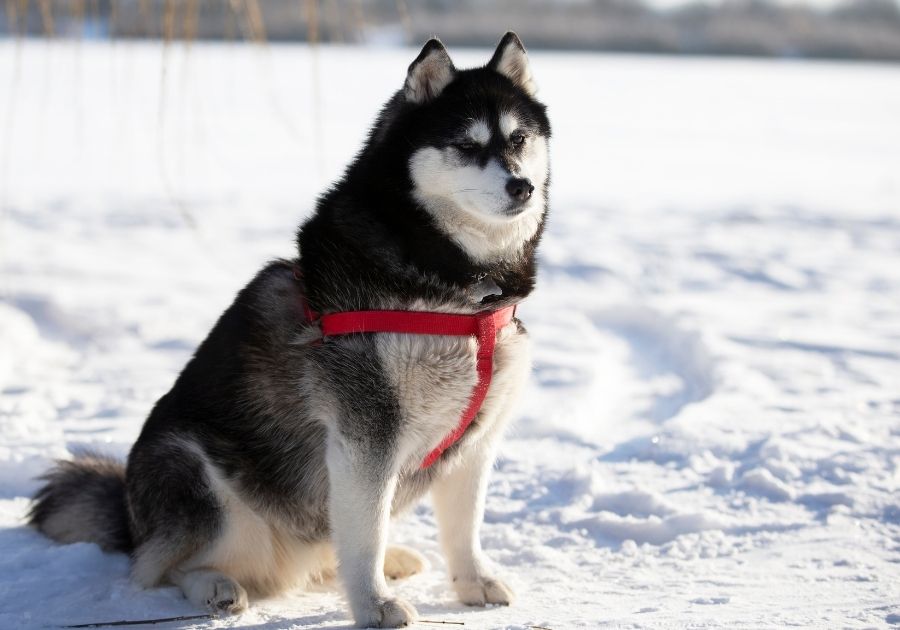
Breed Facts
- AKC Group: Not recognized
- Height: 22 to 26 inches
- Weight: 66 to 88 pounds
- Coat Type: Double, thick, short
- Coat Color: Black, cream, biscuit
- Temperament: Loyal, affectionate, alert
- Origin: Japan
- Life Expectancy: 12 to 14 years
- Grooming: High
- Energy: High
- Health: High
- Good for Apartment: No
The Sakhalin Husky is one of the oldest sled dogs that, unfortunately, got extinct in 2012.
It has always been rare, though, and as of 2015, there were only seven dogs left in total.
This was higher than the number in 2011 (just 2 left as of then) so there was a general optimism that the Sakhalin Husky would be saved.
That didn’t happen, but it still deserves a postmortem mention on our list.
The Sakhalin Husky originated in Japan and was once an asset when the Japanese explored the frozen continent of Antarctica.
This breed was known to be intelligent, and also served as a hunter. It remained in Japan till the last of them died.
10. Labrador Husky
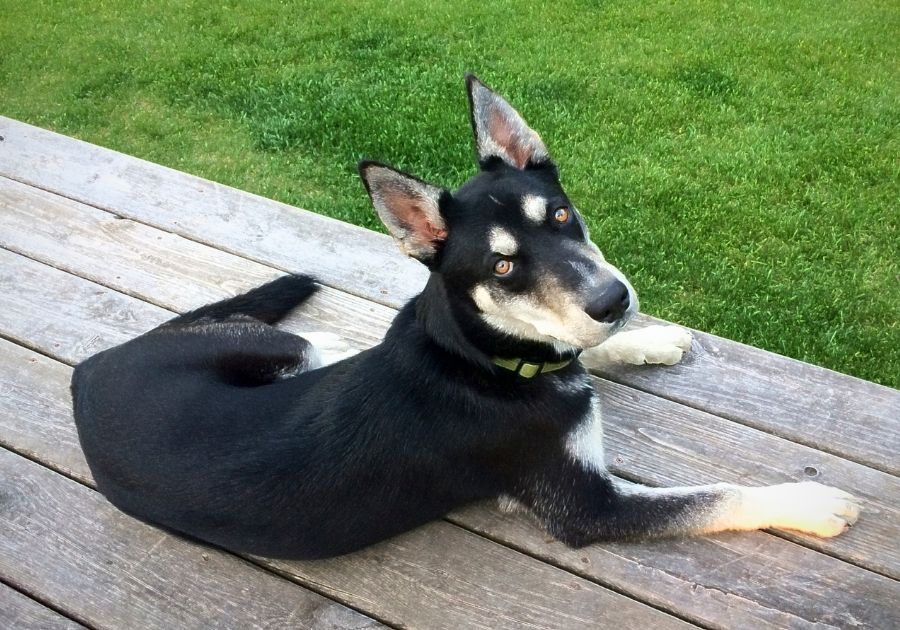
Breed Facts
- AKC Group: Not recognized
- Height: 20 to 28 inches
- Weight: 40 to 60 pounds
- Coat Type: Double, silky
- Coat Color: White, black, yellow
- Temperament: Lively, fun, affectionate
- Origin: Canada
- Life Expectancy: 10 to 12 years
- Grooming: High
- Energy: High
- Health: High
- Good for Apartment: No
Also known as the Labsky or Huskador, there’s a lot of controversy surrounding the status of this breed.
While some experts report that the Labsky is a mixed breed that’s a cross between the Labrador Retriever and the Siberian Husky, others attribute purebred status to it and state that it has the wolf as an ancestor too.
Whatever is the truth, the Labsky is a good sled dog with a strong ability to withstand cold weather.
It has not been recognized by the American Kennel Club and is rare in the United States.
However, families that own this breed do enjoy the love and affection it gives.
11. Greenland Dog
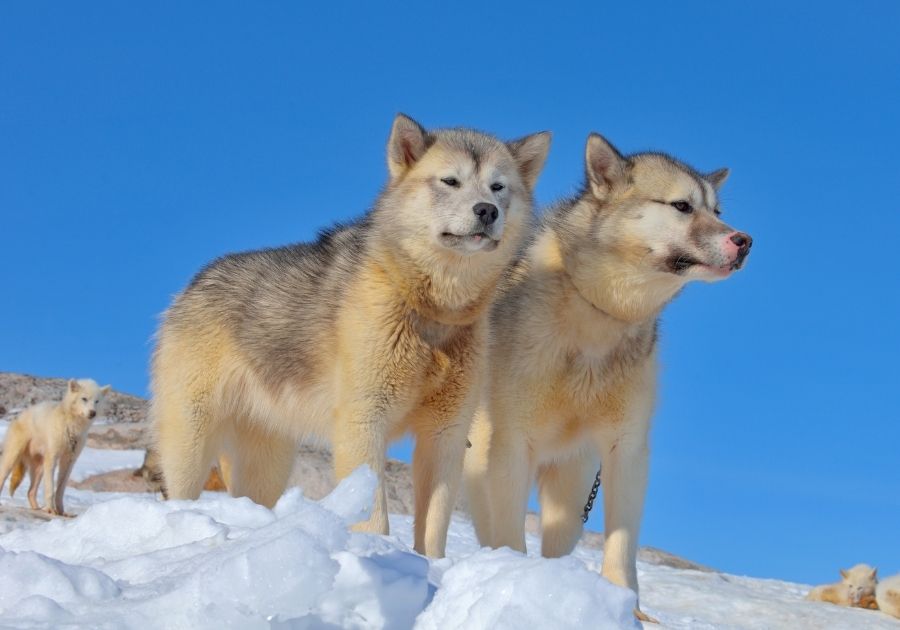
Breed Facts
- AKC Group: Not recognized
- Height: 22 to 25 inches
- Weight: 66 to 70 pounds
- Coat Type: Double, heavy
- Coat Color: Black, white, brown
- Temperament: Friendly, independent, intelligent
- Origin: Siberia
- Life Expectancy: 10 to 14 years
- Grooming: Low
- Energy: High
- Health: High
- Good for Apartment: No
The Greenland Dog is a rare dog breed, but fortunately, it hasn’t gone extinct like the Sakhalin Husky.
It is also old and has a blurry history, but we do know it originated from Siberia.
Some major Kennel Clubs like the United Kennel Club have recognized the Greenland Dog, but the American Kennel Club hasn’t.
Greenland Dogs are friendly, but unlike the Siberian Husky and many other dogs on this list, it doesn’t show affection towards strangers.
Its affection is reserved for the owner alone. It does have the same energy level as other breeds on this list, which means you should be prepared to exercise a lot.
This breed could be getting started when you’re already exhausted.
12. Mackenzie River Husky
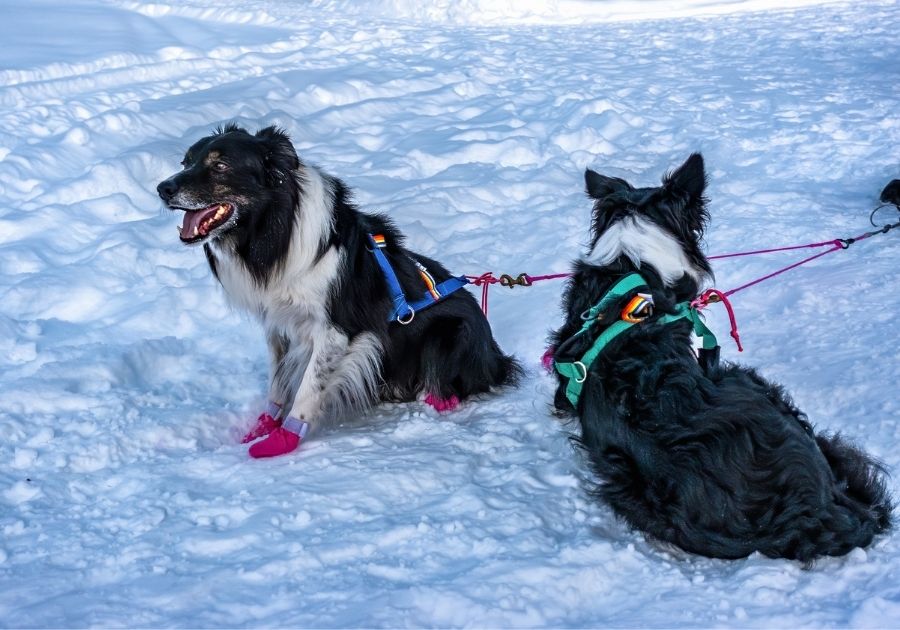
Breed Facts
- AKC Group: Not recognized
- Height: 26 to 29 inches
- Weight: 63 to 104 pounds
- Coat Type: Thick, straight
- Coat Color: Black and white, grey
- Temperament: Independent, trustworthy, eager
- Origin: United States, Canada
- Life Expectancy: 12 to 14 years
- Grooming: Medium
- Energy: High
- Health: High
- Good for Apartment: No
Like the Alaskan Husky, many experts maintain that the Mackenzie River Husky isn’t technically a breed, but one of the sled dog types that regroups many dogs from a particular region.
It isn’t recognized by any major kennel club, and may not be anytime soon.
While this breed isn’t uncommon, it is rare when placed side by side with the Siberian Husky.
The Mackenzie River Husky loves to be a part of family activities and generally doesn’t enjoy being alone.
It needs exercise like other types of huskies and isn’t fit for new pet parents.
13. Yakutian Laika
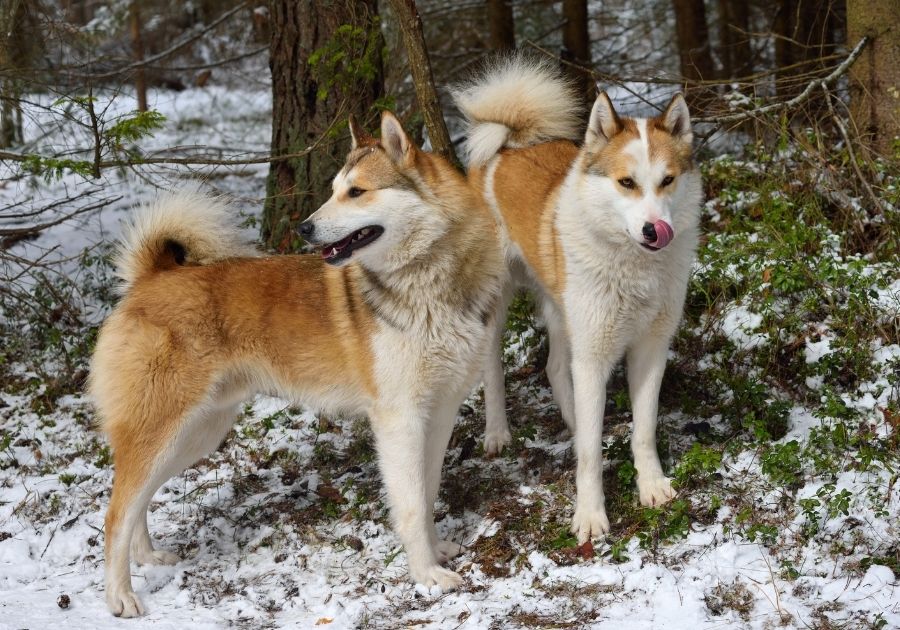
Breed Facts
- AKC Group: Foundation Stock Service
- Height: 20 to 23 inches
- Weight: 40 to 55 pounds
- Coat Type: Double, dense, coarse
- Coat Color: White, gray, black
- Temperament: Intelligent, affectionate, loyal
- Origin: Russia
- Life Expectancy: 10 to 12 years
- Grooming: Medium
- Energy: High
- Health: High
- Good for Apartment: No
The last dog on our list is a relatively rare Russian dog breed called the Yakutian Laika. It is one of the oldest dog breeds, and evidence dates back to 8,000 years.
They belonged to the Sakha who trained them to be sled dogs. The Yakutian served as transport of goods and also hunted.
Aggressiveness was removed from the Yakutian to make it a formidable family dog, and it was introduced to the American Kennel Club’s Foundation Stock Service in 2004.
The Yakutian Laika is the only sled dog that new pet parents can handle because it is easier to train than others on this list.
This doesn’t mean it isn’t stubborn, though. You still need to be firm with it. The Yakutian is also very friendly towards everyone.
Who was the greatest sled dog ever?
There has been a debate as to which sled dog deserves more honor for solving the diphtheria problem.
For a long time, a Siberian Husky named Balto was regarded as the hero of the event.
After, historians pointed out that Togo, another Siberian Husky, achieved more. But we think Balto and Togo both deserve the crown.
Can Golden Retriever pull a sled?
The Golden Retriever wasn’t bred to be a sled dog but rather to retrieve for hunters.
However, it has been part of non-sled dogs that have pulled sleds at some point. Other breeds include Dalmatians and Irish Setters.
Do Malamutes pull sleds?
Alaskan Malamutes were developed for pulling sleds, particularly to transport heavy loads.
Their size, stamina, and strength helped them go a long distance in the snow without getting exhausted.
What is the most popular sled dog breed?
The most popular sled dog breed is without doubt the Siberian Husky.
Due to the achievements of both Balto and Togo, alongside the physical beauty of the Siberian Husky, it has increased in popularity.
Which sled dog breed is extinct?
Unfortunately, the Sakhalin Husky from Japan has gone extinct. After the death of the last breeder in 2012, not much could be done to save it.
Are sled dogs good guard dogs?
Sled dogs often look ferocious, wild, and intimidating, but they do not make good guard dogs.
They were developed to work with people, and as such they love humans.
Final Thoughts
Sled dog breeds have done a lot of good for people in Artic areas with their different services, and they continue to be of benefit to humans by being companions and partaking in sled races.
Aside from the now-extinct breed, we hope you found one that would fit your household from this list.
For popular sled dogs, the Siberian Husky and Samoyed top the list.
First-timers are advised to only try out the Yakutian Laika as others are not suitable for them.
Overall, these dogs need enough exercise, a spacious environment, and an experienced, firm but loving owner.

